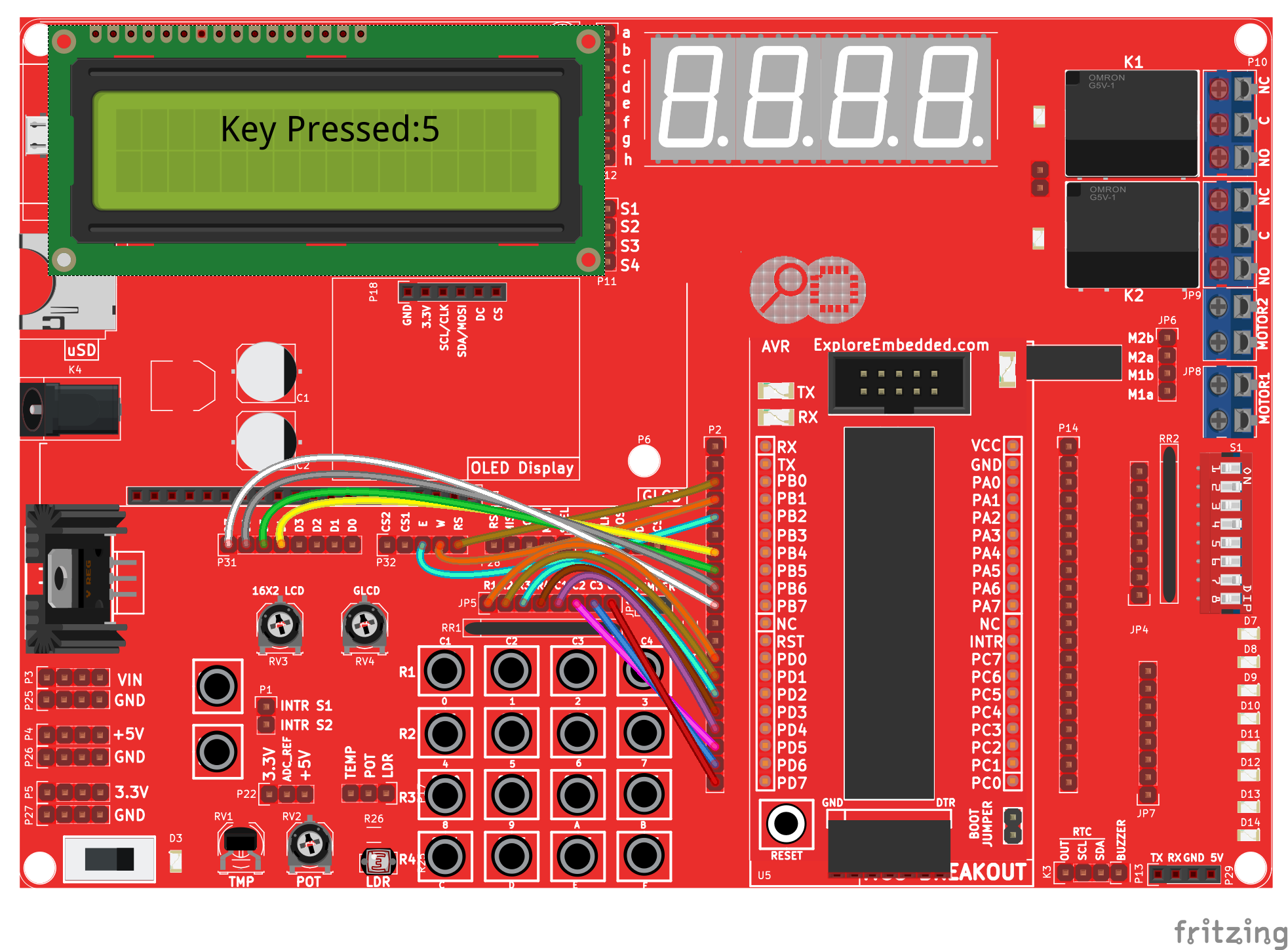AVR Interfacing:Hex Kepad Revision as of 15:17, 24 March 2016 by Raghavendra (Talk | contribs)
Let's look at interfacing a Hex keypad, the one with 16 switches; arranged in 4 columns and 4 rows. The interesting challenge is to interface 16 switches on 8 pins. So how does this work? The simple answer is the MCU is faster than the your fingers. The code has been tested and demonstrated on Ultra AVR Dev Kit with Atmega32, however it should work on any AVR MCU with appropriate modifications.
Basics
Hook Up
Code
#include "keypad.h" #include "lcd.h" int main() { uint8_t key; /*Connect RS->PB0, RW->PB1, EN->PB2 and data bus PORTB.4 to PORTB.7*/ LCD_SetUp(PB_0,PB_1,PB_2,P_NC,P_NC,P_NC,P_NC,PB_4,PB_5,PB_6,PB_7); LCD_Init(2,16); /*Connect R1->PD0, R2->PD1, R3->PD2 R4->PD3, C1->PD4, C2->PD5 C3->PD6, C4->PD7 */ KEYPAD_Init(PD_0,PD_1,PD_2,PD_3,PD_4,PD_5,PD_6,PD_7); LCD_Printf("Key Pressed:"); while (1) { key = KEYPAD_GetKey(); LCD_GoToLine(1); LCD_DisplayChar(key); } return (0); }
Let's look at the most important function in the code in a little more details
key = KEYPAD_GetKey();
As you can guess, the function return the ASCII value of the key being pressed. It follows the following sequences to decode the key pressed:
- Wait till the previous key is released.
- Wait for the new key press.
- Scan all the rows one at a time for the pressed key.
- Decodes the key pressed depending on ROW-COL combination and returns its ASCII value.
It is defined in keypad.c as below:
uint8_t KEYPAD_GetKey(void) { uint8_t i,j,v_KeyPressed_u8 = 0; keypad_WaitForKeyRelease(); keypad_WaitForKeyPress(); for (i=0;i<C_MaxRows_U8;i++) { GPIO_PinWrite(A_RowsPins_U8[i],HIGH); } for (i=0;(i<C_MaxRows_U8);i++) { GPIO_PinWrite(A_RowsPins_U8[i],LOW); for(j=0; (j<C_MaxCols_U8); j++) { if(GPIO_PinRead(A_ColsPins_U8[j]) == 0) { v_KeyPressed_u8 = 1; break; } } if(v_KeyPressed_u8 ==1) { break; } GPIO_PinWrite(A_RowsPins_U8[i],HIGH); } if(i<C_MaxRows_U8) v_KeyPressed_u8 = A_KeyLookUptable_U8[i][j]; else v_KeyPressed_u8 = C_DefaultKey_U8; return v_KeyPressed_u8; }

